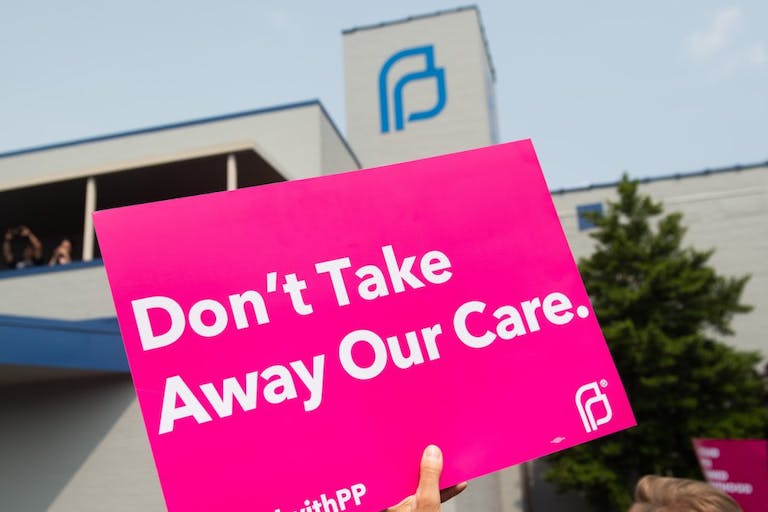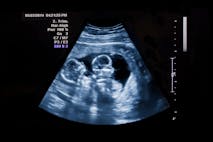
Thousands of South Korea schools close as birth rate plummets
Cassy Cooke
·
SHOCK: Just 3% of women of reproductive age in the U.S. go to Planned Parenthood
If you have based your opinion of Planned Parenthood primarily on the mainstream media’s narrative about the corporation — a narrative crafted from Planned Parenthood’s own talking points — you likely believe that a vast number of people depend upon it for their health care, especially women. But the truth is that while Planned Parenthood commits 41% of the abortions in the United States every year (over 350,000), it actually only serves around 3% of the female population of reproductive age.
Despite increasing taxpayer funding, Planned Parenthood’s own reports reveal that many of its services have been in decline while abortions continue to increase. Meanwhile, Federally Qualified Health Centers (FQHCs) offer multiple services for both men and women while remaining free of the controversy of abortion.

For years, Planned Parenthood has masqueraded as a “women’s health” organization, yet it serves a very small percentage of female clients annually. Planned Parenthood’s latest annual report for 2019-2020 revealed that out of the 2.4 million clients it recorded, nearly 2.1 million were female, while 321,001 were male, which is a growing demographic.
According to population estimates in 2019, there were 165 million females in the United States with 64 million females of reproductive age (15–44). This means that Planned Parenthood’s female clientele represents just 3.3 percent of the U.S. female population of reproductive age.
For the past several years (2015, 2016 , 2017 2018, and again in 2019), Planned Parenthood’s clientele has remained at 2.4 million clients annually. But a closer look at previous patients numbers reveals that clients at Planned Parenthood have actually declined 20% from the 3 million it claimed to serve in 2009 and over 27% percent since its 1996-1997 annual report (3.3 million clients).
In contrast, federally qualified health centers (FQHCs) serve tens of millions of men and women annually and have increased their patient load by nearly 23% in recent years.
The number of Planned Parenthood facilities has remained around 600 nationwide for the past several years, a decrease of nearly 29% percent since 2009, and a drop of over 33% from a high of 900 in 1996-1997.
In contrast, FQHC sites have increased to around 12,000:
2015: More than 9,800 clinics and mobile medical vans.
2017: More than 10,400 clinics mobile medical vans.
2019: Approximately 12,000 sites and mobile medical vans.
According to a 2016 analysis published by the National Center of Health Statistics, women had 22.5 million prenatal visits with providers in the U.S. That same year, Planned Parenthood reported just 7,762 prenatal services; in 2019, PP reported 8,626 prenatal services.
This means that Planned Parenthood likely provides less than one percent (.0004%) of prenatal services in the United States. Undercover investigations conducted by Live Action have revealed that prenatal care is not just difficult to find at Planned Parenthood facilities, but practically nonexistent. Even the workers themselves seemed baffled that anyone would call asking for prenatal services, which were advertised at the time on Planned Parenthood’s own website and later scrubbed.

In the mid-to-late 1990s, Planned Parenthood suggested in an annual report that prenatal care was its “fastest-growing area.” Today, the tune has drastically changed. Prenatal care at Planned Parenthood has been on the decline even as its abortion numbers continue to increase year after year. Over the span of a decade — the corporation’s 2009-2010 annual report through its most recent 2019-2020 report — Planned Parenthood provided a total of 200,530 prenatal services. At the same time, it committed nearly four million abortions.
FQHCs provide almost twice the number of prenatal services annually as Planned Parenthood reported over the span of 20 years. For example, in 2015, Planned Parenthood reported 9,419 prenatal services while FQHCs served 552,150 prenatal patients. In 2019, Planned Parenthood recorded 8,626 prenatal services while FQHC’s served 583,328 prenatal patients. The years between followed this pattern as well.
FQHCs vs. Planned Parenthood on Pap tests
Article continues below
Dear Reader,
In 2026, Live Action is heading straight where the battle is fiercest: college campuses.
We have a bold initiative to establish 100 Live Action campus chapters within the next year, and your partnership will make it a success!
Your support today will help train and equip young leaders, bring Live Action’s educational content into academic environments, host on-campus events and debates, and empower students to challenge the pro-abortion status quo with truth and compassion.
Invest in pro-life grassroots outreach and cultural formation with your QUADRUPLED year-end gift!
According to the Centers for Disease Control and Prevention, 66% of women aged 18 and over had a Pap test within the past three years. This means that, despite federal funding from several agencies, Planned Parenthood only provides less than one percent of US pap tests.
125,321,000 (est. females 18 and older) x 66% (82,711,860/by three years = (27,570,620)
PP’s 2019 share is 272,990/27,570,620 = .0099 x 100= .99% — less than 1%
Planned Parenthood’s latest report shows that its Pap tests increased nearly 7% from 255,682 in 2018-2019 to 272,990 in 2019-2020, but those tests have actually dropped nearly 70% from reported numbers in 2009 and nearly 77% from a reported record high of 1,183,692 in 2004.
Today, FQHCs provide over six times the number of Pap tests that Planned Parenthood reports, an average of nearly two million Pap tests each year. See the contrast below:
2015: While PP recorded 293,799 Pap tests, FQHCs performed 1,863,957.
2017: While PP recorded 274,145 Pap tests, FQHCs performed 1,853,912.
2019: While PP recorded 272,990 Pap tests, FQHCs performed 1,809,082.
FQHCs vs. Planned Parenthood on breast exams/mammograms
Planned Parenthood does not perform mammograms — they only provide manual breast exams. According to the CDC, 66.7% of women aged 40 and over had a mammogram within the past two years, an estimated 27 million in 2019 (81,487,000 est. females 40 and older x 66.7%= 54,351,829/by two years = 27,175,914). Planned Parenthood did zero of these.
In the past decade, the manual breast exams at Planned Parenthood declined 68% from 2009 and 75% from its 2000-2001 report.
2015: While PP recorded 321,700 manual breast exams, FQHCs performed 521,568 mammograms.
2017: While PP recorded 296,310 manual breast exams, FQHCs performed 724,187 mammograms.
2019: While PP recorded 269,669 manual breast exams, FQHCs performed 823,312 mammograms.
So what can Planned Parenthood do that FQHCs don’t? Abortion
According to Planned Parenthood’s most recent report (2019-2020), it committed more than 354,871 abortions, the highest on record. Despite national declines, Planned Parenthood’s market share of abortions is expanding and has now reached 41% of all abortions nationwide when comparing Planned Parenthood’s 2019-2020 reported abortions with Guttmacher’s most recent 2017 data.
Abortions nationwide have dropped nearly 57% from the peak recorded in 1990, according to CDC data from 2018. The U.S. abortion rate hit its lowest point since Roe v. Wade, according to (2017) Guttmacher data. Abortions have been declining nationally after topping more than 20 million since 2000.
But they have not been declining at Planned Parenthood.
Planned Parenthood is an abortion corporation, and in just the past reported year (2019-2020), abortions increased nearly 3% there from the previous year and 7% from 2009. Between October 2018 and October 2019, nearly one out of every six female clients that visited Planned Parenthood had an abortion.
U.S. tax dollars would be better spent on FQHCs than Planned Parenthood, which now commits 41 abortions for every one prenatal care service and 133 abortions for every adoption referral, ending the lives of 972 preborn children daily — one killed every 89 seconds.
Editor’s Note, 5/7/21: This article was updated for consistent numbers on “prenatal services” versus prenatal clients.
“Like” Live Action News on Facebook for more pro-life news and commentary!
Live Action News is pro-life news and commentary from a pro-life perspective.
Contact editor@liveaction.org for questions, corrections, or if you are seeking permission to reprint any Live Action News content.
Guest Articles: To submit a guest article to Live Action News, email editor@liveaction.org with an attached Word document of 800-1000 words. Please also attach any photos relevant to your submission if applicable. If your submission is accepted for publication, you will be notified within three weeks. Guest articles are not compensated (see our Open License Agreement). Thank you for your interest in Live Action News!

Cassy Cooke
·
Analysis
Cassy Cooke
·
Analysis
Cassy Cooke
·
Analysis
Bridget Sielicki
·
Analysis
Cassy Cooke
·
Analysis
Cassy Cooke
·
Abortion Pill
Carole Novielli
·
Abortion Pill
Carole Novielli
·
Investigative
Carole Novielli
·
Abortion Pill
Carole Novielli
·
Investigative
Carole Novielli
·